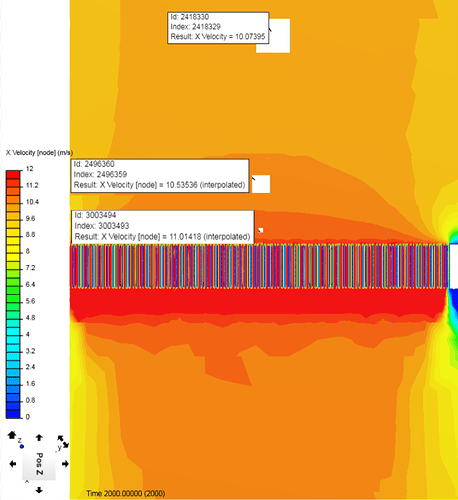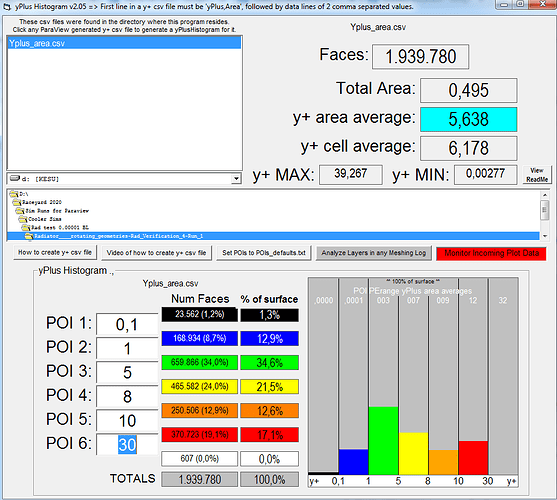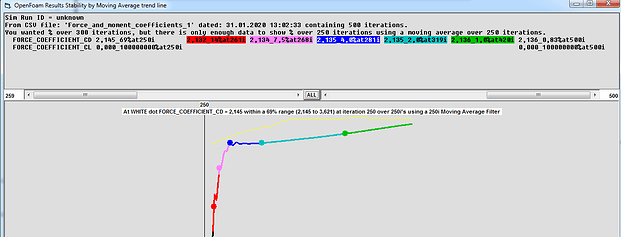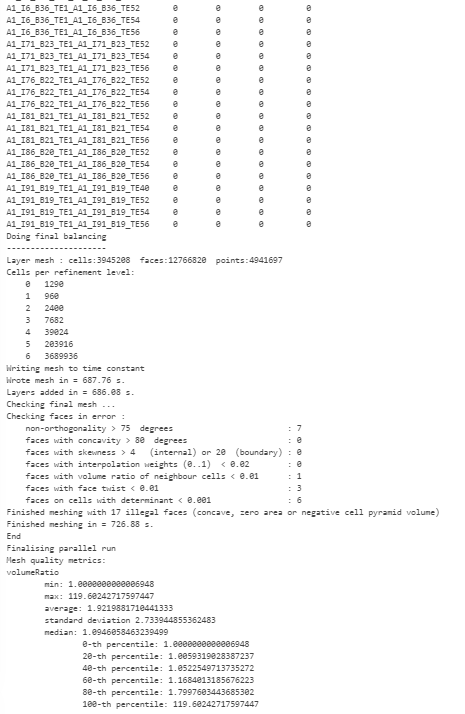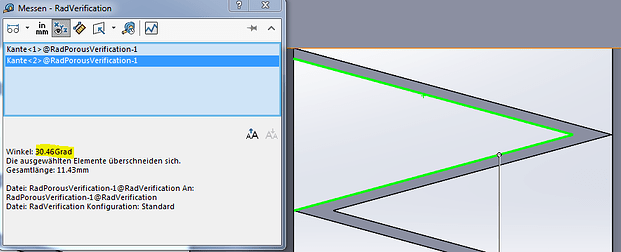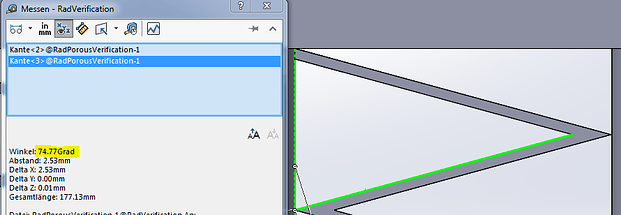So after many failed attempts to improve mesh quality. I am trying a new strategy. In the previous meshes I was trying to use a feature refinement to decrease the cell size where the fins meet. I had the problem of the mesh connecting the fins where it shouldn’t as shown below.

After the 5th failed attempt, I copied the meshing log as it appeared and recorded the cell sizes after each iteration. (way to many cells, memory issues) Part of the problem is that I had some of the mesh quality settings too high I think, with the belief that it would help with the mesh conformation to the geometry.
- Min refinement cells - 4
- Mesh to geometry conformation iterations - 13
- Implicit feature snap - ON
- Explicit feature snap - OFF
| Iteration Type |
Number of cells |
| Feature Refinement Iteration 1 |
3810 |
| Feature Refinement Iteration 2 |
14730 |
| Feature Refinement Iteration 3 |
92500 |
| Feature Refinement Iteration 4 |
403314 |
| Feature Refinement Iteration 5 |
1515012 |
| Feature Refinement Iteration 6 |
5117296 |
| Surface Refinement Iteration 0 |
6932452 |
| Surface Refinement Iteration 1 |
7117091 |
| Shell Refinement Iteration 0 |
15545988 |
| Shell Refinement Iteration 1 |
20989202 |
| Shell Refinement Iteration 2 |
21135957 |
| Shell Refinement Iteration 3 |
About the same |
| Shell Refinement Iteration 4 |
About the same |
| Coarse Cell Refinement 0 |
21167128 |
| Interface Cell Refinement 1 |
21787461 |
| Interface Cell Refinement 2 |
21916590 |
| Interface Cell Refinement 3 |
About the same |
| Interface Cell Refinement 4 |
About the same |
| Total cont before cell reduction |
21916590 |
I think i should reduce the setting “Mesh to geometry conformation iterations” so that the refinements stop earlier and dont create/do so many checks on the cells
After looking at the advance control settings again in the Simscale documentation, I noticed that I have probably been making a big mistake with the feature refinements. When Implicit feature snap is - ON, but without a feature refinement being created, Implicit feature will estimate the geometry and automatically snap to calculated point on the geometry.
Implicitly Detect Features for Snapping (implicit Feature Snap)
The implicit method does not require the user to extract features. Instead, it uses the resolveMax Face Angle For Layer Generation (featureAngle) keyword entry to identify surface geometric features, e.g. creases in the geometry. Rather than snapping directly to an edge geometry, as supplied explicitly in the previous method, the implicit method snaps to a representation of the feature, calculated from local surface topology.
Does this mean that the mesh will use the feature angle specification to decide what is an edge or feature (anything below this angle) UNLESS a feature refinement is created, which overrides the Implicit settings and then follows the feature angle and distance settings provided within the refinement.
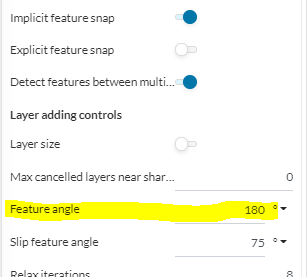
With Implicit OFF and Explicit feature snap ON, a feature refinement is the only method the mesh uses to snap to features and edges.
Use “Feature Refinement” for Snapping (explicit Feature Snap)
For this method a feature refinement can be added under mesh refinements to specify feature extraction for snapping. The method can handle snapping features that represent the intersection between boundary patches that are even in the same plane.
From OPENFOAM® official site “The explicit method offers greater control and, from our experience, provides slightly better feature conformation. The implicit method has the advantage of being fully automated.”
My strategy now is to use explicit feature snap and specify the exact feature refinements that i need. For example, below i have the exact angles within the fins. The first is where the fin meets the radiator housing, at 15.23 deg. I can set a feature refinement with 16 deg inclusion angle and a higher refinement level.
Then I can take the next fin angle of 30.46 deg, set a 31 deg inclusion angle at a lower refinement level. The first higher feature refinement will not apply itself to this area because it is outside of the predetermined inclusion angle of 16 deg.
I can then continue this to the last fin angle of 74.77 deg, set inclusion angle to 75 then again a lower cell refinement.
Lastly I can set a final feature refinement to 91 deg so all remaining 90 deg faces are refined to another level.
I am not sure how well this will work due to influence of region refinements or surface refinements at a higher level then the feature refinement levels. I guess we will see
